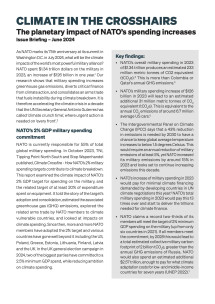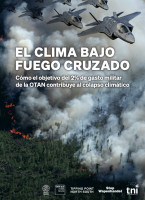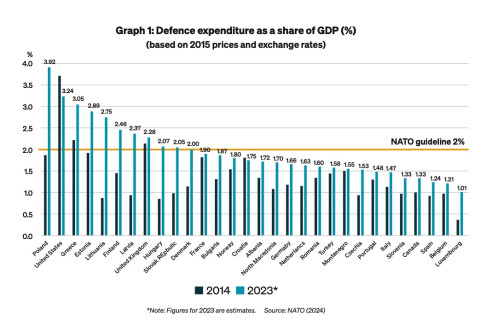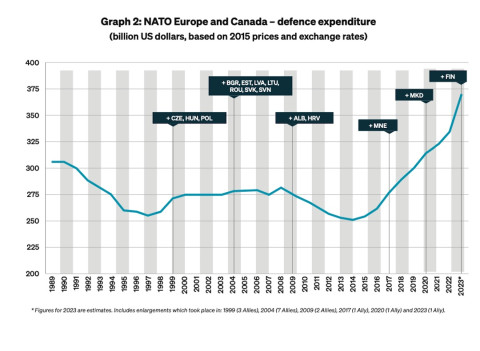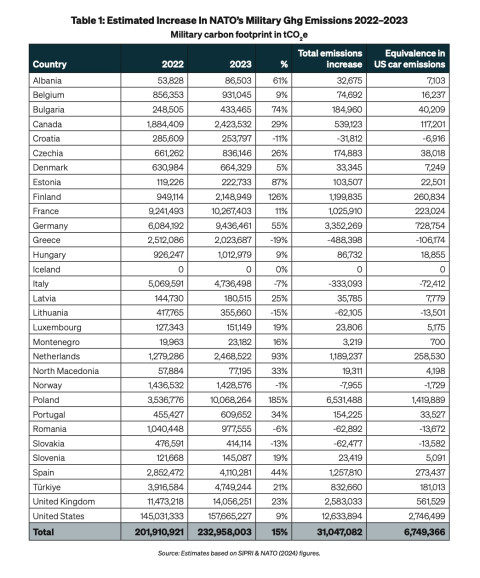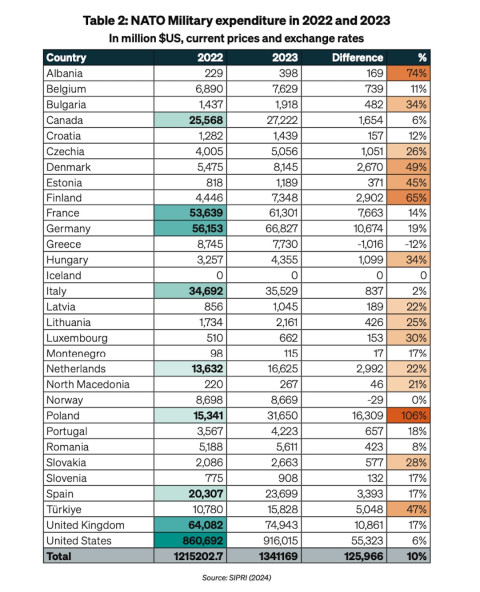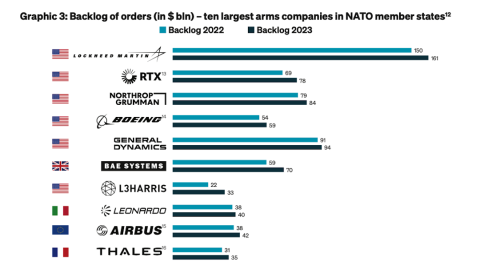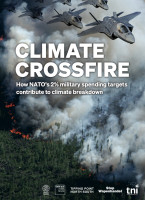NATO’s biggest military spenders and polluters
The US is by far the biggest military spender, making up more than two-thirds of total NATO spending. It is followed by the UK, Germany, France, Italy, Poland, Canada and Spain. The biggest military spending increases in 2023 were by the US, Poland, the UK and Germany with spending rising by $55bn, $16bn, $10.9 bn and $10.7 respectively.
The average proportion of military expenditure spent on major military equipment also increased from 25.5% to 27.3% with many making substantial increases, especially Finland and Poland, who both spent more than 50% of their military expenditure on equipment in 2023.8
As a result eight NATO members increased their military carbon footprint by more than one million tCO2e (equivalent to annual emissions of around a quarter of a million US cars), namely the US, Poland, Germany, the UK, Spain, Finland, the Netherlands and France. The US military is already the world’s largest institutional greenhouse gas emitter.

